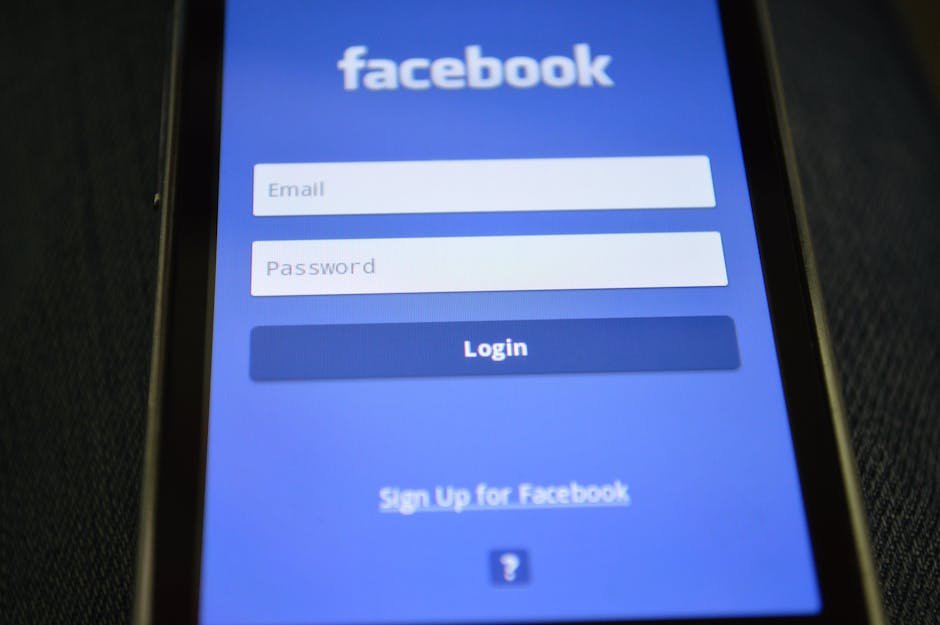Contents
There are many reasons why websites are not secure. One reason is that website owners do not take the time to secure their site. They may not know how to secure their site or they may not think it is necessary. Another reason is that hackers are constantly finding new ways to break into websites. They may exploit security vulnerabilities or they may use social engineering to trick website owners into giving them access. There are also some website platforms that are not very secure. For example, WordPress is a popular platform for websites but it has many security vulnerabilities.
There are many reasons why a website may not be secure. The most common reason is that the website has not been properly configured to use HTTPS, which is the standard for secure websites. HTTPS encrypts all data that is sent between the user and the website, making it very difficult for someone to intercept and read that data. Other reasons for insecurity can include outdated security software, weak passwords, and poor server security.
How do I fix my website is not secure?
If you’re seeing the “Website Not Secure” message in Chrome, it means that your website is not using a secure protocol (HTTPS) to transmit data. This can be a big problem, because it means that your website is vulnerable to attack.
Fortunately, there are a few things you can do to fix this problem.
Purchase an SSL Certificate: The first step is to purchase an SSL certificate. This will enable your website to use the HTTPS protocol, which is much more secure.
Install the Certificate Using Your Web Host: Once you have your SSL certificate, you’ll need to install it using your web host. This is usually a very simple process.
Change Your WordPress URL: If you’re using WordPress, you’ll need to change your WordPress URL to https://. This can be done in the WordPress settings.
Implement a Site-Wide 301 Redirect: Once you’ve done all of the above, you’ll need to implement a site-wide 301 redirect. This will ensure that all traffic to your website is redirected to the HTTPS version of your site.
If your website is showing up as “not secure”, then it is missing an updated SSL Certificate. This is easily recognizable in your website URL as it will start with HTTP instead of HTTPS. SSL is an acronym for “secure sockets layer” which is a type of web security that protects internet sites.
Why are so many websites not secure
If you see a warning that says your connection is not secure, this is due to an issue with security certificates. Certificates are what websites use to prove they are who they say they are on the internet, and if your browser detects an issue with a certificate, it will issue a warning. In many cases, the problem is not with your computer or web browser at all.
If you see the “HTTPS Not Secure” message in Chrome, it means that the website you’re visiting doesn’t have an SSL Certificate. SSL Certificates are necessary for the HTTPS to appear. So if you’re seeing this message, it means that the website isn’t properly secured.
Why is my site not secure even though certificate?
If you’re seeing a “Not Secure” error or warning in Chrome, it means that your website is not using a secure connection. This most often happens because there are links on your page that still point to HTTP instead of HTTPS. Check your page for mixed content and make sure all your links are pointing to HTTPS. If you’re still seeing the “Not Secure” error, contact your website’s support.
When you see the “Not Secure” warning in your Chrome browser, it means that the website you are visiting is not using a secure HTTPS connection. This means that any information you enter on that website (including login information or payment information) could be intercepted by someone else.
For this reason, you should avoid conducting any sensitive transactions on websites that are not using a secure HTTPS connection. If you must enter information on an HTTP site, be sure to do so only on a trusted, secure network.
How do I get rid of this site is not secure on Chrome?
Adding a site to your “Not allowed to show insecure content” list will prevent any non-secure (HTTP) content from loading on that site. This is useful if you’re trying to view a site that is entirely HTTPS and you don’t want any HTTP content to load, even if it’s just an element on the page.
When shopping online, it is important to make sure that the store is safe and legitimate. There are a few ways to check this:
– Use the free McAfee WebAdvisor to check for safe sites.
– Check the padlock in the address bar.
– Verify the website’s trust seal.
– Use the Google Transparency Report.
– Check the company’s social media presence.
– Analyze the overall look of the website.
How do I know if my Google Chrome was hacked
If you’re noticing any of the above signs, it’s possible that your browser has been hijacked. This can happen if you accidentally download malicious software or if you visit a website that has been compromised. If you think your browser has been hijacked, take steps to clean your computer and reset your browser.
These dangerous sites typically resemble legitimate websites, and your computer can be attacked by simply visiting a malicious website. You may be prompted to download software that your computer appears to need. A hazardous installation can compromise your machine, and your sensitive information as well. Protect yourself by only visiting websites that you trust, and be very cautious when prompted to download and install software.
Which website we should not visit?
It’s a sad day when your favorite website shuts down. We’ve all been there, finding out that a website we loved is no longer accessible. Sometimes it’s due to a change in ownership, other times it’s because the site just couldn’t keep up with the times. Whatever the reason, it’s always sad to see a website go.
Here are 20 websites that you’ll never be able to visit again. Pour one out for them:
1. Google Answers
2. Sixdegrees.com
3. The Hamster Dance
4. Prodigy Pets
5. Borders.com
6. Friendster
7. Homestar Runner
8. Miz Subscribe
9. Angelfire
10. GeoCities
11. Neopets
12. Chatroulette
13. MySpace
14. Vine
15. Yik Yak
16. Vimeo
17. Flixster
18. AIM
19. Del.icio.us
20. Google Reader
1. Using a website safety checker is a good way to find out if a link is safe.
2. Just copy/paste the URL into the search box and hit Enter. Google Safe Browsing’s URL checker will test the link and report back on the site’s legitimacy and reputation in just seconds.
3. It’s that easy to use Google’s URL scanner.
How do I know if my website has malware
If you believe your website may be infected with malware, it’s important to scan it as soon as possible. The Sucuri SiteCheck website offers a free malware scanner that will check your site for any malicious code or infected files. If the scan finds anything, review the warning message to look for any payloads and locations. You can also click “More Details” to review the iFrames, links, scripts, and embedded objects to identify unfamiliar or suspicious elements. If you’re not sure what to do, contact a Sucuri security expert for assistance.
HTTPS provides a layer of security for websites by encrypting communications between the site and the user. This security is provided by an SSL certificate, which protects sensitive information entered into that site as it travels from the site to a server. Without an SSL certificate, that information is exposed and easily accessible by cybercriminals.
What is the most trustworthy type of website?
Websites with these domains (the URL ending) generally have reliable information: org (a registered organisation), edu (an educational institution), gov (a government agency), govau (an Australian government agency).
If you receive emails or texts about login attempts, password resets, or two-factor authentication (2FA) that you didn’t request, it’s possible that your account has been hacked. Similarly, if you see logins from devices and locations you don’t recognize in your account activity or sign-in logs, this could be a sign that your account is compromised. If you suspect that your account has been hacked, change your password immediately and take steps to secure your account.
How do you know if a hacker is watching you
It’s important to be aware of the possibility that your camera could be hacked. There are a few things you can do to check if your camera is hacked. First, check if the camera indicator light is on. If it is, then someone may be remotely viewing your camera. Next, check your browser extensions to see if any are devices that can access your camera. Also, check for known and unknown applications that may have access to your camera. Finally, try running the webcam and see if any audio or video recordings are being made without your knowledge. If you suspect that your camera is hacked, it’s a good idea to run a malware scan and enable your firewall to help protect your privacy.
If you’re having trouble logging into your router’s admin settings, it’s a sign that your router has been hacked. The hacker probably used a password attack to break into your router’s settings. You should change your router password and make sure your network is secure.
What is the most unsafe website
dangerous websites
There are many dangerous websites out there that can jeopardize your computer’s security and personal information. Be sure to only visit safe websites that you trust to protect yourself from these threats.
If you clicked on a phishing link, the first thing you need to do is immediately disconnect your device from the internet. This prevents malware from spreading to other devices connected to your network. If you’re using a wired connection, then simply unplug it from your computer or laptop.
Can visiting websites get a virus
Yes, you can certainly get a virus just from visiting a website. These days, it’s very easy to be overconfident in our abilities to avoid computer viruses. We often click on links without thinking, or without knowing where they will lead us. Sometimes we download files without realizing that they may be infected. And all it takes is one little click to infect our computer with a virus. So be careful out there!
Malicious websites can pose a serious threat to both individuals and businesses. They are created by cybercriminals to steal data and plant malware, such as ransomware. These websites often masquerade as legitimate ones and use phishing emails to lure visitors. Security tools and awareness training can keep employees from exposing themselves and your company to losses.
Warp Up
There are many possible reasons why a website may not be secure. It could be that the website has not been properly configured to use SSL/TLS, meaning that data transmitted between the user and the website is not encrypted. Alternatively, the website could be using outdated or weak encryption algorithms, making it easier for attackers to decrypt communications. Additionally, the website may not be verifying the identity of users, meaning that an attacker could impersonate a legitimate user and gain access to sensitive information. Finally, the website could simply have poor security overall, making it easier for attackers to exploit vulnerabilities and gain access to sensitive data.
There are many reasons why a website may not be secure. It could be that the site was not designed properly, the server could be compromised, or the connection could be insecure. Any of these issues could lead to data being compromised or stolen.

0 Comments